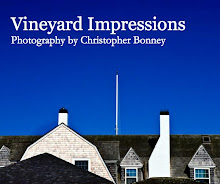Williamsburg Window, 1986
After coming across those pictures of downtown Norfolk the other day, an even nicer trove of older photographs fell into my lap when my wife brought me a shopping bag full of old photo prints and unmarked negatives she’d come across while cleaning out some cabinets in the family room. Most of the pictures were of family events and just needed to be sorted. But a few were my feeble attempts to find something interesting to photograph beyond family members.
The three photos in this post are good examples of what I was doing from the mid -1980s to the mid-1990s. The two Williamsburg pictures document my transition from black-and-white to color. The Daggett House photo represented my transition from strictly representative photographs to photographs that could be something more or different.
I’d started taking “portal perspective” pictures in Colonial Williamsburg during the late 1960s. That was probably the first time I’d realized I could use a “borrowed view” as a composition device in a photograph.
The older Williamsburg View, below, has flaws and the poor exposure isn’t improved in the scanning. But you can see where when I was making a tentative attempt to get back into photography fifteen years later I returned to the familiar portal perspective motif. (But as you can see, I hadn’t figured out how to balance the exposure for images with strong lights and darks.)
Williamsburg Window, above, represented a shift from pictures with a wide scope to pictures with a narrower scope. When I look back at photographs I took in the 1960s, many of them are large scenes, images where a lot is going on or where there are a lot of people. I’ve always had a preference for wide views and wide-angle lenses that can capture the parts of those wide views that are so appealing to me.
But without really thinking about it, I’d started taking pictures of small “moments,” scenes that in some cases were no bigger than a few inches across. Williamsburg Window doesn’t have that tight of a perspective. But before that I wouldn’t have thought of photographing just the wreath and the window. I’d have likely photographed the whole house,
The Daggett House View, from fourteen years ago, is also something of a transitional photo. We’d flown up to Martha’s Vineyard for a weekend in the early spring to attend a family wedding and were staying at the old Daggett House inn. It’s quiet on the Vineyard that time of year. The light is glorious, though, and that’s what I wanted to capture in this picture. The content was less important than the color, so I purposely processed it to be less about the content and more about the color.

Daggett House View, 1997

Williamsburg View, 1985




























